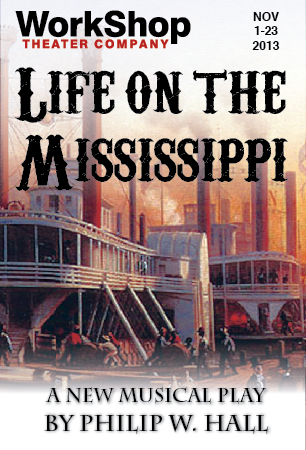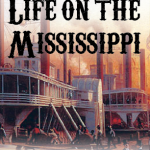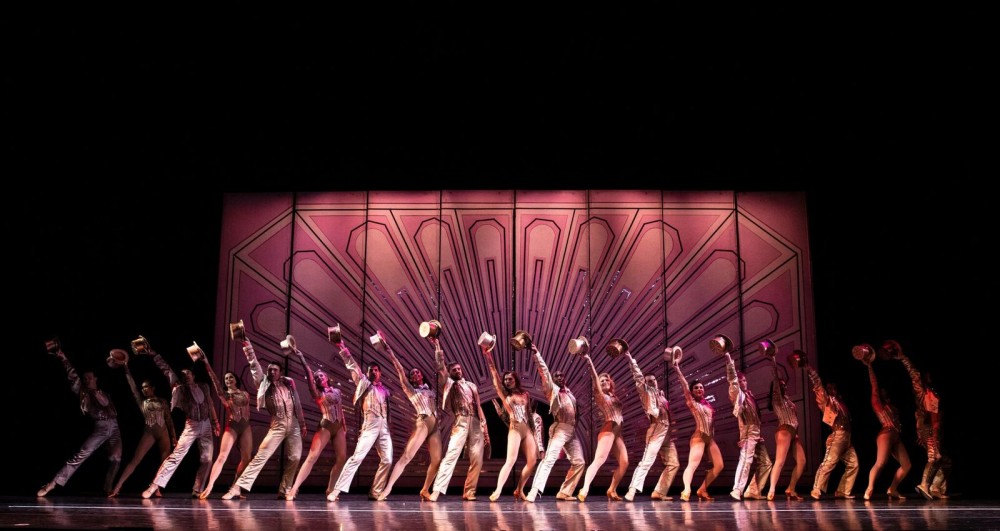By Marcina Zaccaria
Produced by the WorkShop Theater Company, “Life on the Mississippi” is a fun, musical play celebrating Mark Twain’s story of a steamboat adventure.
Young Sam Clemens and his brother Henry step onto a Mississippi steamboat. As a cub apprentice, Sam’s ambition propels him to become a steamboat pilot, but he soon discovers that learning the great, relentless river will be harder than he ever imagined.
The steamboat lessons are fast and furious, and Sam braves each moment with Jim, Brown, Tom, Malloy, Pappy, and Horace Bixby. This musical adaptation is based on Mark Twain’s memoir, and, in it, writer Philip W. Hall creates a folk tale that is swift and always on time. The script draws from American mythology as it questions themes of mortality, resurrection, and transcendence. As Sam learns every twist and turn of the waters, he is challenged and inspired. The Mississippi river is not so much something to be conquered but something to navigate through.
With this kind of material, it is easy for actors to create a syrupy, sweeping drama as they ramble on, but “Life on the Mississippi” doesn’t fall into these traps. The company is quite a united team, and each actor makes excellent use of his stage space. Portrayal of Sam by Andrew Hubacher is thoughtful without being deeply pensive. As he is learning the lessons from the Mississippi, he is undaunted. Quick to notice flaws and smart to point out weaknesses in others, he is a leading force on stage throughout most of the play. Supporting players are quick to counter. The other sailors are firm and instructive without being snide, and Mark Coffin as Brown and Richard Kent Green as Malloy solidly hold their positions onstage.
Direction by Susana Frazer is sharp and quick. The play has moments of joy, vengefulness, and despair, and the character relationships are intricate. Choreography is tight without being too showy. It is smooth, brave, and articulate. It celebrates the best of musical theater, and it calls upon styles we know without being hokey.
Musical Direction by Fran Minarik is quite strong. Solos and choral numbers are clearly heard throughout the theater. With guitar, violin, mandolin, 12 string, and banjo, the orchestrations are full and complete without being lush. Music and Lyrics by Philip W. Hall are melodic and light, and make for good, popular entertainment.
Scenic design by John McDermott brings the landscape alive behind the performers. The modular set created by McDermott includes an anchor, crates, and stands that look like pulpits. Painting of the grass and swamp land is quite interesting, and performers are able to see themselves within the context of it. Costumes by Annette Westerby are detailed and true to the period.
“Life on the Mississippi” will be running until November 23rd at The Main Stage Theater at 312 West 36th Street. For reservations, please contact www.workshoptheater.
























